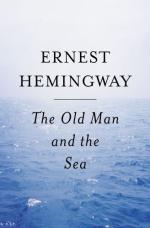|
This section contains 5,179 words (approx. 18 pages at 300 words per page) |

|
SOURCE: "The Old Man and the Sea: A New Hemingway Hero," in Discourse: A Review of the Liberal Arts, Vol. IX, No. 3, Summer, 1966, pp. 283-94.
In the following essay, Hovey rejects earlier interpretations of Santiago as a Christ-figure and Aristotelian tragic hero, seeing him rather as a more believable character than those found in Hemingway's other works; he is representative of the human race and the novella "reconciles us to our human condition."
In 1950 Hemingway embarrassed us with his worst book, Across the River and into the Trees. Two years later, he astonished us with The Old Man and the Sea. Somehow he had regained control of his art. Out of his inner conflicts as a man and artist he had achieved a harmony which makes this, in a classical sense, the sweetest and most serene of his works. Whatever its shortcomings, The Old Man and the Sea...
|
This section contains 5,179 words (approx. 18 pages at 300 words per page) |

|


